
The Old Ipswich Courthouse is a heritage-listed former courthouse located at 73-75 East Street, Ipswich, City of Ipswich, Queensland, Australia. It was designed by Charles Tiffin and built from 1859 to 1936. It was added to the Queensland Heritage Register on 21 October 1992.

Boondah is a heritage-listed detached house at 50 Howard Street, Paddington, City of Brisbane, Queensland, Australia. It was apparently designed by Richard Gailey and built c. 1907. It was added to the Queensland Heritage Register on 11 June 1993.
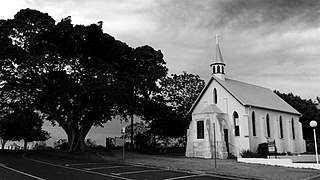
St Pauls Anglican Church is a heritage-listed church at Cross Street, Cleveland, City of Redland, Queensland, Australia. It was designed by James Furnival and built in 1873; it was extended in 1924 to a design by Lange Leopold Powell. It was added to the Queensland Heritage Register on 21 October 1992.

Kyeewa is a heritage-listed villa at 1 York Street, East Ipswich, City of Ipswich, Queensland, Australia. It was built c. 1890 for Ernest Greenway. It was added to the Queensland Heritage Register on 21 October 1992.

Fairy Knoll is a heritage-listed villa at 2A Robertson Road, Eastern Heights, City of Ipswich, Queensland, Australia. It was designed by George Brockwell Gill and built from c. 1897 to 1952 by Worley & Whitehead. It was also known as Jefferis Turner Centre. It was added to the Queensland Heritage Register on 21 October 1992.

Marburg Community Centre and First World War Memorial is a heritage-listed former bank and community centre at 71 Edmond Street, Marburg, City of Ipswich, Queensland, Australia. The bank building was designed by George Brockwell Gill and built in 1912 by Hastie and Halliwell. The war memorial was added in 1919. It is also known as National Bank of Australasia and Queensland National Bank. It was added to the Queensland Heritage Register on 21 October 1992.

Hotel Metropole is a heritage-listed hotel at 253 Brisbane Street, West Ipswich, City of Ipswich, Queensland, Australia. It was designed by George Brockwell Gill and built in 1906. It was added to the Queensland Heritage Register on 21 October 1992.
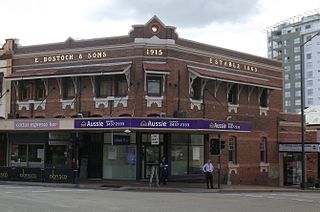
Bostock Chambers is a heritage-listed office building at 169-175 Brisbane Street, Ipswich, City of Ipswich, Queensland, Australia. It was designed by George Brockwell Gill and built in 1915. It was added to the Queensland Heritage Register on 21 October 1992.

Flour Mill is a heritage-listed former mill at 231 Brisbane Street, Ipswich, City of Ipswich, Queensland, Australia. It was designed by George Brockwell Gill and built from 1901 to 1902. It is also known as Bridal Mill, F.W. Johnson and Sons Motor Showroom, and Old Flour Mill. It was added to the Queensland Heritage Register on 21 October 1992.
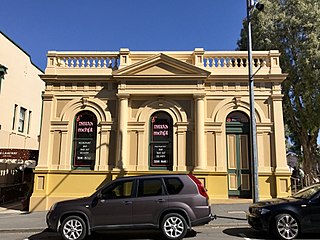
The Bank of Australasia is a heritage-listed former bank at 116A Brisbane Street, Ipswich, City of Ipswich, Queensland, Australia. It was designed by Reed & Barnes and built in 1878. It is also known as Council Offices, Ipswich Library, and Ipswich Visitors and Tourist Information Centre. It was added to the Queensland Heritage Register on 21 October 1992.

Queensland Country Women's Association Girls' Hostel is a heritage-listed detached house at 5 Brisbane Street, Ipswich, City of Ipswich, Queensland, Australia. It was built from c. 1885 to c. 1911. It was added to the Queensland Heritage Register on 21 October 1992.

The Queensland National Bank is a heritage-listed former bank building at 89 Brisbane Street, Ipswich, City of Ipswich, Queensland, Australia. It was built from 1877 to 1935. It is also known as National Bank of Australasia and Bank of Queensland. It was added to the Queensland Heritage Register on 21 October 1992.
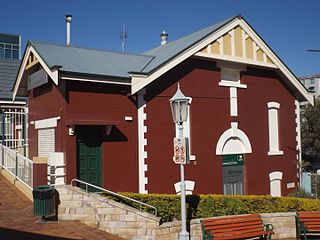
St Paul's Young Men's Club is a heritage-listed former clubhouse and now art gallery at 48 d'Arcy Doyle Place, Ipswich, City of Ipswich, Queensland, Australia. It was designed by George Brockwell Gill and built in 1911. It is also known as Ipswich Regional Art Gallery and St Paul's Young Men's Society Hall. It was added to the Queensland Heritage Register on 21 October 1992.

Ipswich Club House is a heritage-listed villa at 14 Gray Street, Ipswich, City of Ipswich, Queensland, Australia. It was designed by George Brockwell Gill and built from c. 1915 to 1916. It was added to the Queensland Heritage Register on 21 August 1992.

Rockton is a heritage-listed villa at Rockton Street, Newtown, City of Ipswich, Queensland, Australia. It was built from 1855 onwards. It was added to the Queensland Heritage Register on 21 October 1992.

Soldiers' Memorial Hall is a heritage-listed community hall at 63 Nicholas Street, Ipswich, City of Ipswich, Queensland, Australia. It was designed by George Brockwell Gill and built by F.J. Lye from 1920 to 1921. It is also known as Memorial Hall. It was added to the Queensland Heritage Register on 21 October 1992.

Uniting Church Central Memorial Hall is a heritage-listed church hall at 86 East Street, Ipswich, City of Ipswich, Queensland, Australia. It was designed by George Brockwell Gill and built from 1895 to 1895 by W Betts. It is also known as Congregational Sunday School. It was added to the Queensland Heritage Register on 9 July 1993.

Ipswich & West Moreton Building Society is a heritage-listed building society office at 45 East Street, Ipswich, City of Ipswich, Queensland, Australia. It was designed by Francis Drummond Greville Stanley and built from 1888 to 1950s by Peter Brown. It was added to the Queensland Heritage Register on 21 October 1992.
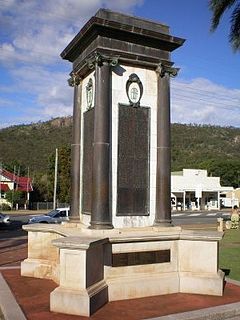
Esk War Memorial is a heritage-listed memorial at Ipswich Street, Esk, Somerset Region, Queensland, Australia. It was designed by George Brockwell Gill and built in 1920 by Frank Williams & Co. It is also known as Esk Memorial Park. It was added to the Queensland Heritage Register on 21 October 1992.

Ipswich Girls' Grammar School Buildings is a heritage-listed group of private school buildings at Ipswich Girls' Grammar School, 82 Chermside Road, Ipswich, City of Ipswich, Queensland, Australia. They were built from 1891 to 1968. They were added to the Queensland Heritage Register on 21 October 1992.




























